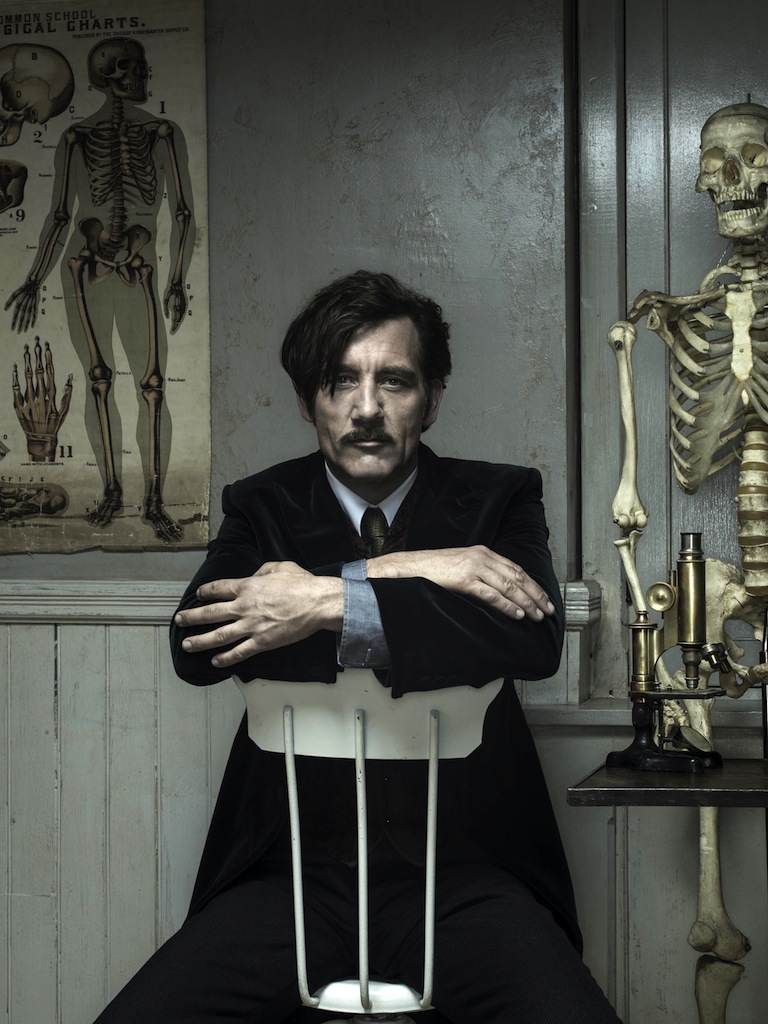
Clive Owen by Dan Winters for Cinemax, 2015
Almost everything about this picture is inauthentic, and yet it works. It would make an impression even if a viewer knew nothing at all about what it shows, but it does assume a degree of familiarity with its subject. Its purpose is promotional. The charismatic sitter with the piercing stare and floppy fringe is the British actor Clive Owen, star of Sin City, Shoot ’Em Up, and Children of Men. Dan Winters’ photograph cannot properly speaking be called a portrait, though, because Owen has assumed the guise of the character he plays in Cinemax’s TV drama The Knick: Dr. John W. Thackery, chief surgeon of the Knickerbocker Hospital in New York City.
The Knick, as previously noted, plunges us up to the blood-spattered elbows into the alarming world of early surgery, and it shows experimental procedures, carried out in a public operating theater, with an explicitness that is highly informative and sometimes shocking. Dr. Stanley Burns, a well-known collector of early medical photographs, is an historical adviser on the drama directed by Steven Soderbergh. Thackery has grandiose visions of his calling, but thanks to the horrible pressure and high mortality rate of his labors, soon descends into drug addiction, regularly injecting cocaine before surgery and escaping at night to an opium den. In the picture, only the missing cufflink hints at this dissolute life. Thackery remains throughout the first two seasons a driven and romantic figure who never entirely loses the audience’s sympathy no matter how far he pushes his luck.
One of the drama’s pleasures is its brilliant evocation of the atmosphere of the hospital and the city in 1900. In his portraits of film stars, Winters often favors a gloomy palette and textured, theatrical settings, and his muted, slightly sickly colors are ideally matched to the ambience of The Knick. There can be no more obvious memento mori than a human skeleton, but Winters doubles the charge by adding an old anatomy poster, with oddly metallic bones, making the image centered on Owen/Thackery into a kind of composite triptych. It scarcely matters that this rudimentary piece of graphic instruction, published by the Chicago Kindergarten Supply Co. (probably in the 1890s), would have been intended for schoolrooms rather than surgeons’ offices. The poster directs Cinemax’s publicity picture toward the growing audience for antique medical objects and imagery stimulated by the collections of the Burns Archive, the Mütter Museum, and the National Library of Medicine, and by the Morbid Anatomy website. The photo may be an artfully constructed fiction, an image game, but that doesn’t make it ring any less true.

